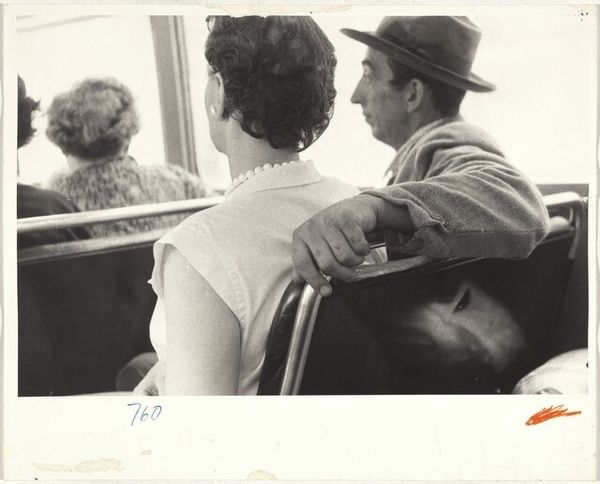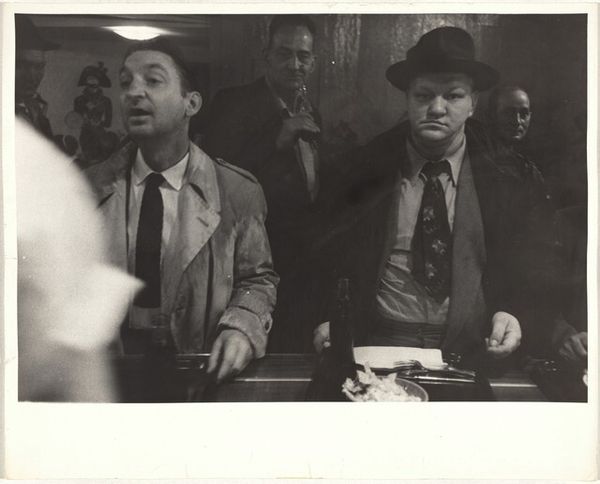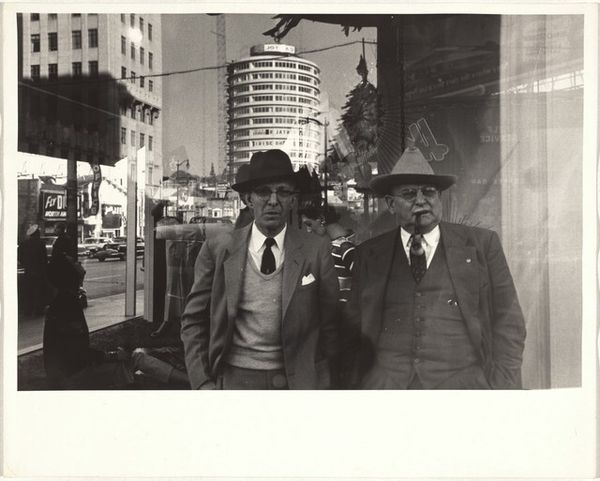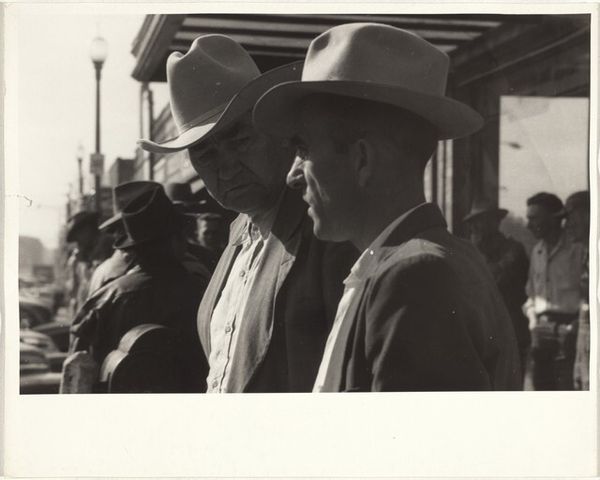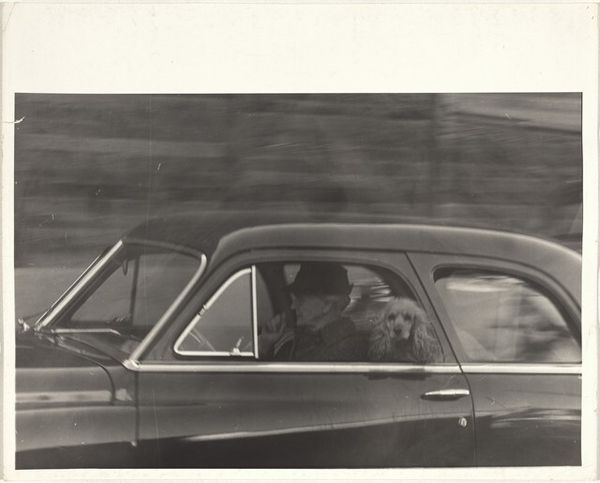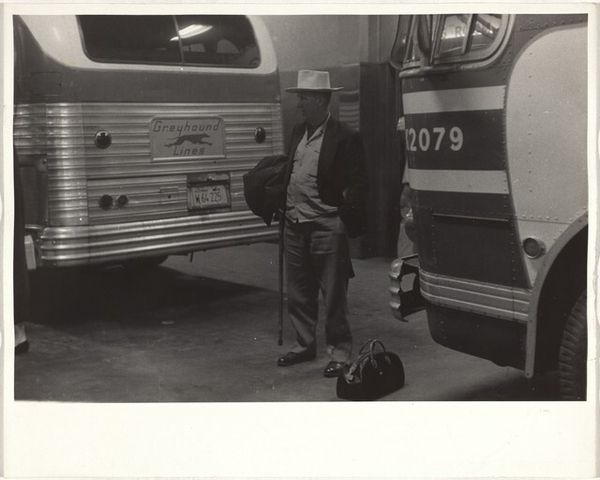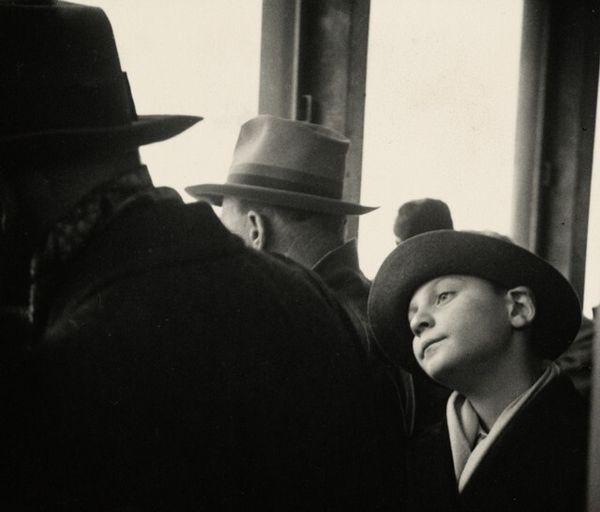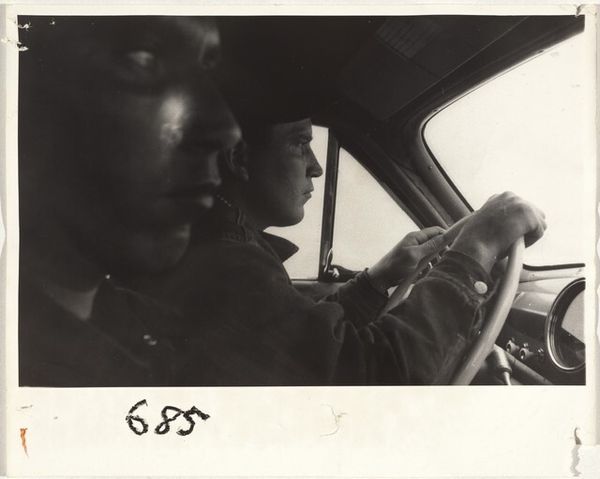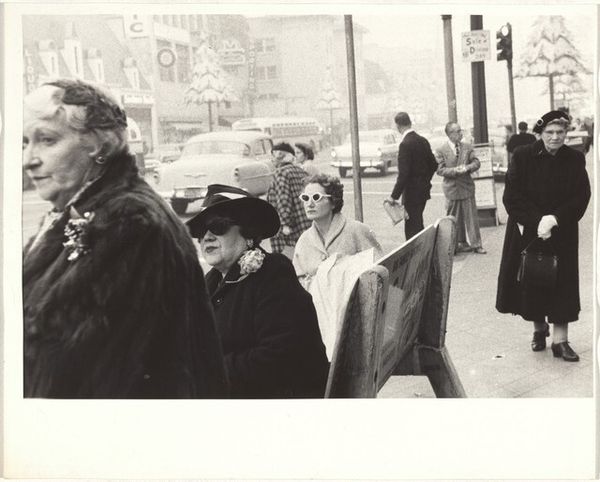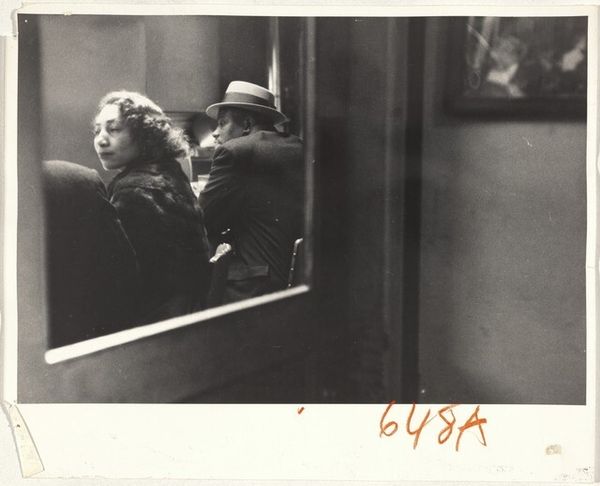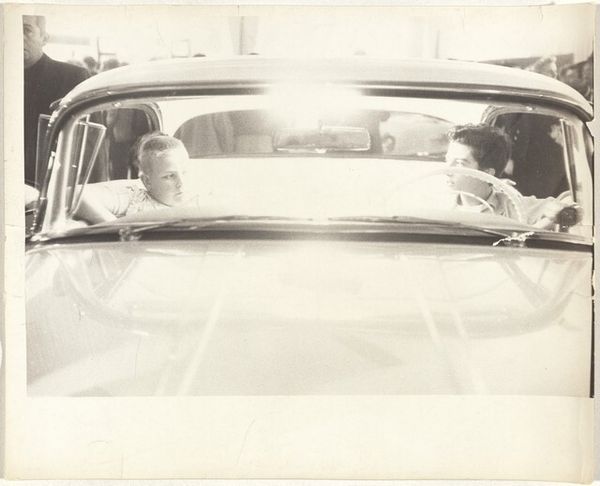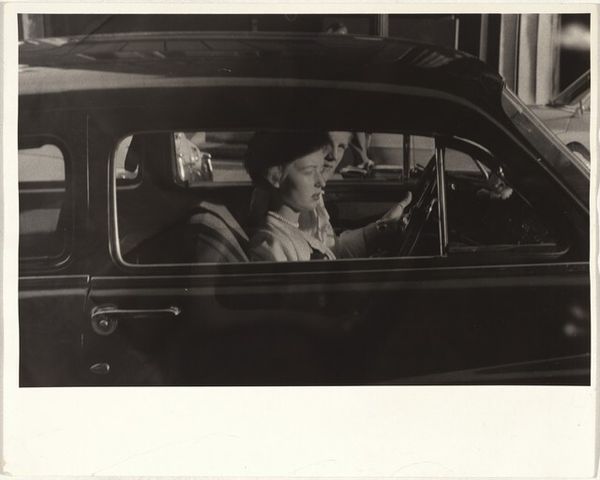
Three children in interior--outside Las Vegas, Nevada c. 1955 - 1956
0:00
0:00
Dimensions: sheet: 20.3 x 25.2 cm (8 x 9 15/16 in.)
Copyright: National Gallery of Art: CC0 1.0
Curator: Here we have Robert Frank's gelatin silver print, "Three children in interior--outside Las Vegas, Nevada," likely taken between 1955 and 1956. What strikes you first about this piece? Editor: Immediately, this overwhelming sense of muted expectation. The tones are beautifully soft, but there's an almost melancholic stillness to it, especially in the boys’ eyes. I wonder what they're waiting for? Curator: Considering Frank’s work often explores themes of alienation and societal observation in postwar America, I see a connection between the composition and the themes he investigated. Notice how the man in the cowboy hat and suit acts almost as a barrier, both visually and perhaps metaphorically. The context, Las Vegas, is fascinating too, evoking boom and bust economies. Editor: Yes, the suited man seems disconnected, doesn’t he? The children look to be in their own world, yet they share the same space with the adult, separated somehow. And the setting! Las Vegas embodies this idea of artifice and spectacle, clashing poignantly with the children's almost somber expressions. Did the photo production influence his approach? Curator: Absolutely. Frank's use of the gelatin silver print, with its ability to capture a wide range of tones, lends a certain intimacy to what is essentially street photography. He documents reality through emphasizing a visual texture. Furthermore, understanding gelatin silver prints as a mass-produced material form is vital—how they democratized photographic practices, but were also susceptible to degradation and loss, linking to societal cycles of value. Editor: It gives the photo a rawness. This snapshot feel enhances that sense of fleetingness. It makes you consider what Frank's perspective was—a witness, yes, but also an interpreter, selecting and shaping meaning out of ordinary moments. Curator: Precisely. The print's inherent materiality speaks to its role as an object produced and consumed within a specific economic and cultural landscape, and, through its physical degradation, carries historical context that invites further consideration. Editor: This image has a strange beauty, both stark and moving, I think, in what is unspoken. Thank you. Curator: And thank you, it gives us plenty to think about as we proceed on our tour today.
Comments
No comments
Be the first to comment and join the conversation on the ultimate creative platform.

